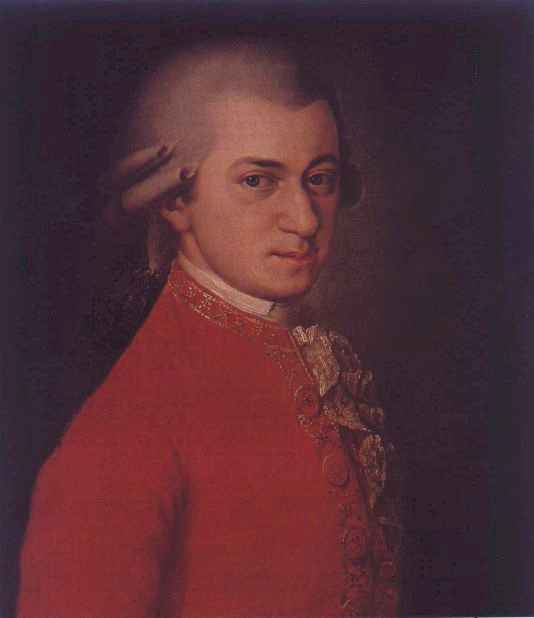
MASTERPIECE OF WOLFGANG AMADEUS
MOZART
(1756 - 1791)
Wolfgang Amadeus Mozart was born in Salzburg,
Austria on January 26, 1756. Though he did not begin to walk until he was three years old,
Mozart's talent for music soon became apparent. At the age of four, he could reproduce on
the piano a melody played to him; at five, he could play the violin with perfect
intonation; and at six he composed his first minuet. As the young Mozart's reputation
grew, his father Leopold realized the financial rewards that could arise from increased
exposure of his son's talents. From that time on, Wolfgang and his sister Nannerl spent
much of their childhood traveling through Europe. The rulers of Europe and England were
astounded by Wolfgang's abilities of composition, improvisations, and sight reading. While
the public admired Wolfgang for his talents, they disapproved quite heartily of his
father, saying extensive voyages and frequent exhibitions were no life for the child.
Mozart become the concertmaster for the Archbishop of Salzburg in 1771. After spending
frustrating and unproductive years serving the Archbishop, Mozart resigned. He promptly
moved to Vienna where his creative energies flourished. There Mozart met and was
influenced by Hayden, who came to love him like his own son. He told Leopold Mozart,
"I consider your son to be the greatest composer I have ever heard." In 1782,
Mozart married Constanze Weber, the sister of his long-time love Aloysia. His father
disapproved of his son's choice of bride and lifestyle. The newlyweds lived the carefree
gypsy life constantly moving from house to house, spending money frivolously. In 1784,
Lorenzo Da Ponte presented Mozart the libretto for The Marriage of Figaro and a long
collaboration between the two began. Figaro premiered in 1786 to an enthusiastic crowd.
The two continued their initial success with another: Don Giovanni, which received its
premiere in Prague in 1787. Later that same year, Wolfgang's father died, leaving the
31-year old alone for the first time. The success of a revival of Figaro in Vienna led to
a commission from the Emperor Joseph II for Cosi fan tutte, again with Da Ponte, the
premiere of which was a qualified success. In 1790, with the death of Joseph II, Mozart
found himself out of favor with the new regime and plagued by his creditors. He was helped
by Emanuel Shikander, who commissioned The Magic Flute for his theater. Another commission
came at this time, for La Clemenza Di Tito, but it did not help his situation, as it
received mixed reviews. Mozart's health waned and it was during this illness that he
received his last commission. A mysterious stranger requested a requiem mass from the
composer. Depressed and delirious, Mozart became convinced that the Requiem was for his
own death. In 1791, Wolfgang's pupil Sussmayer completed the work, as the composer was too
ill. He was given a pauper's funeral and was buried in an unmarked grave, in silence and
unattended.
Eine kleine Nachts
Musik 15:46
Symphony
no40 in G 1. Molto allegro 8:54
Symphony
no41 in C 'Jupiter' 1. Allegro vivace 8:42
Magic flute (overture)
7:29
Symphony
no25 in G 1. Allegro con brio 7:32
Dies Irae
(excerpt from Requiem) 1:50

